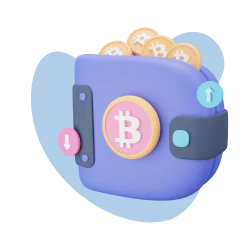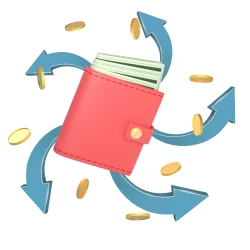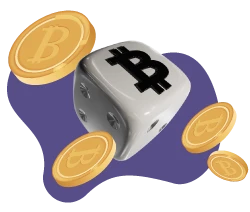What Are Degen Yield Farms?
 The concept of yield farming could be a confusing one. The crypto community contributes value to various dApps and, in return, takes home rewards called yields. That’s what yield farming is all about: it involves lending a pair of crypto tokens to a DeFi app ecosystem to provide liquidity. This earns you profit every time a transaction happens on that currency pair.
The concept of yield farming could be a confusing one. The crypto community contributes value to various dApps and, in return, takes home rewards called yields. That’s what yield farming is all about: it involves lending a pair of crypto tokens to a DeFi app ecosystem to provide liquidity. This earns you profit every time a transaction happens on that currency pair.
There are different types of yield farms suitable for various profiles of investors, degen farms being high-risk ventures given the exteme volatility they are subject to, with the potential to make you a fortune in a short time. An investor must keep monitoring to determine the perfect exit position, and statistics show that over 95% of investors in these farms lose their capital.
Core Concept Of Degen Yield Farms
Degen farms usually start by rolling out a new token. Let’s say the latest token is ABC, and it’s valued at 1USDT. The farm will announce annual payout percentages for liquidity staking, usually as high as 3,000%, paid in the same token. Early investors will start purchasing the ABC-USDT pair from decentralized crypto exchanges like Uniswap and drive prices higher as the demand grows. Payouts start rolling within just a few days of investing, and early investors start cashing out. In turn, liquidity is reduced, causing ABC-USD price movement to remain stagnant. When other traders see that, they run into panic selling, thinking that the price is about to fall. Eventually, it does so, usually at the drop of a hat. Remaining investors rush to clear out their portfolios, and within no time, ABC-USD price tank to as low as $0.
How Does a Degen Yield Farm Work?
Farm Token
Picking up from our earlier discussion, farm tokens are the tokens that new farms roll out when they are just starting out. So far, almost all degen farms start with farm tokens. Farm tokens have no value initially, but the founders of the yield farm put in their own money to give the tokens value. Typically, a liquidity pool is created where all contributed liquidity goes in to determine the value of the farm token. So the initial price of farm tokens is not backed by actual demand or a project but is simply set according to the founders’ contribution. For example, if they want to start at $5, they will simply invest $5 for every coin as their initial capital. This means that the initial price means nothing. Of course, you can use that to know how invested the founders are in the project and hence how much hope they have in it. Given two farms with an initial amount of 1 million tokens, a farm with a starting price of $15 is more likely to last than one with an initial price of $2. The latter has more liquidity than the former. Low liquidity is undesirable because it leads to extreme volatility, which can usually send people into a panic fast and initiate a crash.
Tokenomics
The next thing after rolling out a farm token is an ICO. The farm launches a presale where investors fund the project in exchange for farm tokens. Early investors participating in presales usually pay extra fees towards the creators. While this might make ICOs seem unattractive, the impending benefits are normally worth it. Investors get paid in the farm token when the returns start streaming in. Going back to our earlier case of ABC farm token, as an investor, you will buy, say, 100 ABC-USD tokens and in turn, expect a reward as high as 800 tokens after some time. It all happens in real-time, just like stock trading, except it’s 24/7. Keep in mind that these tokens have no real use. So when you earn the 800 ABC tokens, you can only swap them for a stable coin or useful crypto like Ethereum. But why do people invest in something with zero use cases? Because the projects are generally over-hyped with promises to make high returns. People jump in with their hard-earned cash, hoping to make a lifetime fortune.
Infinite Printing
The number of tokens in a degen yield farm may be fixed in the beginning but doesn’t mean the supply is capped like in the case for Bitcoin. These farms can print tokens recklessly if there is demand. So initially, they could start with only a million tokens, but after hyping up the project ad seeing that they have four million orders, they will immediately create extra three million coins. The supply will never run out as long as new buy orders are streaming in. Initial investors soon feel that they have made enough profit and start swapping them for more valuable cryptocurrencies with an actual use case. A supply-demand situation arises, with more tokens for sale than the demand. Prices start stalling and even pulling back in some cases. How it works at this point is that other traders may also begin to sell the coins too. No one wants to get out with a smaller profit when they have accumulated enough, right? Unfortunately, more sales don’t do any justice to the price. Some project founders may buy the excess liquidity to fuel more demand and push prices back to the roof. In this case, investors will pump in more money, and token printing will never stop.
4% Fee
Now that the presale is done, the new farm launches. The only supported payment method at this time is the native token, or what we call the farm token. ICO buyers can start cashing in by selling some of their coins that are already gaining value. Those who are lucky to buy the farm tokens directly can invest them in the new farm; the rest will be forced to buy the token directly from the farm using foreign currencies. All foreign currency transactions usually attract a fee. The fee might vary from one farm to another, 4% being the most common. So if you deposit $100, $4 goes towards the project developers. The percentage is fixed no matter how much you’re transacting. Usually, most degen farms label this fee as a platform contribution fee, development fee, or something like marketing fee. This fee doesn’t go to the liquidity pool, unlike the invested amount. Instead, it’s paid directly to the founders of the project. The assumption among traders is that this is a strategy to force more investors to buy tokens directly and deposit rather than use another currency.
Token To 0
So this is where it gets real. Initially, project owners may try to absorb excess liquidity during sell-offs and increase their marketing effort to attract more investors. Keep in mind that printing is non-stop as long as there is a new demand. But this can’t go on forever. There is no real product or use case backing the farm token’s price.
- Ultimately, big investors will cash out, and the price will drop sharply raising an alarm.
- If not, an adverse event could happen in the entire crypto community sending investors into panic selling. Both of these are possible.
- In most cases though, inflation due to excess printing becomes unsustainable, and the token price falls like a stone from the sky.
- To add more fuel, the project owners can’t lose their initial investment, so they withdraw their money all at once, leaving the farm token back at $0.
Degen farms are mostly pyramid schemes to scam unsuspecting and greedy investors. Some people already know that the chances of losing are 90 times more than those of winning but still go ahead and put their money in degen yield farms.
How Do Degen Yield Farms Make Money?
 Traditional banks pay interest on saving accounts after using client money to do business. The main business, in this case, is lending to customers who, in turn, pay back with high interests. The bank then takes a small portion of its profits and settles it into your savings account. How about degen farms? Do they make money from their business?
Traditional banks pay interest on saving accounts after using client money to do business. The main business, in this case, is lending to customers who, in turn, pay back with high interests. The bank then takes a small portion of its profits and settles it into your savings account. How about degen farms? Do they make money from their business?
We found out that most degen yield farms make money from the 4% and from early sales of the tokens they hold. 4% might seem too little, but remember: the most successful ones have raised as high as $500 million in staked farm tokens. Here they pocket $20 million. This is not small money. The biggest rake in, however, comes from early sales of the tokens they held. Once the founder’s liquidity has set prices, and the farm has been launched, the developers start cashing out slowly. So if they hold 200,000 tokens, they might liquidate, say 50,000, once prices start jumping up. Assume the initial price was $10, and they decide to liquidate 50,000 tokens when the value is at $40. They take home $20 million without a sweat. The owners have more information about what’s going on behind the scenes so they can know when to start cashing out. Other participants may not realize that a massive chunk of money has been taken out. In the end, they also pull out their entire capital when they see a project collapsing. This, too, makes them a fortune since they get out at a higher token valuation.
Ultimate Crypto Degen Yield Farming Guide
Main Farming Techniques
Investing in degen yield farms can seem difficult for first-timers, so let’s make it seamless. There are two main farming techniques:
1. Single Asset Staking: It’s a simple farming method where the participant simply invests in a single asset. You simply buy one asset, for example, CAKE for Pancake swap or UNI for Uniswap, and stake it. You will start earning interest in the same token.
2. Liquidity pool farming: Liquidity pool asset is the opposite of single asset staking. Here you stake a pair of currencies, for example, UNI/USD, and earn every time they are transacted on the DeFi platform.
Strategies To Avoid Permanent Loss
It is wise to stay away from the new farm’s native tokens of unproven platforms as they are mainly subject to uncontrolled volatility and could crash rapidly. Native tokens for established DeFi platforms like Pancake swap are safe. Another critical strategy is to refrain from impermanent loss. Impermanent loss occurs if, at the time of withdrawal, the value of your funds has gone down due to a change in the pool’s currency ratio. You can avoid this by investing in farm tokens whose prices have completely bottomed. For example:
- Stake native token in the liquidity pool when the price is ranging. In context, when the cost of UNI is not volatile, you can invest in UNI/USD or any other UNI liquidity pool.
- Withdraw your investment when an upward trend starts and stake a single asset. In this case, you can stake Uniswap’s native token UNI to maximize your returns.
When the price is moving down, it is best to stay out of the market. Usually the best course of action is to avoid staking in liquidity pools of single assets and waiting for it to reach the bottom before you start staking.
How To Find Degen Farms
Finding degen farms is easy: you can simply run a Google search, and an endless list will pop up. But what do you do with all those farms? You’ve got to pick one or a few that feel ‘safe.’ That means diving into research. There are not many places online where you can find proper information about degen farms. We came across two useful tools during our search.
Rug Doctor (RugDoc)
This is an entire review website covering several DeFi services. It has sections for degen farms, stable farms, individual farm tokens, crypto exchanges, play-to-earn games, and even NFTs. The RugDoc lists over 200 degen farms and provides an option to filter them according to five risk parameters. This tool has a launch calendar that gives a heads up on the upcoming projects and when they are launching, so you can take advantage of that information to buy into a new degen farm as an early investor.
VFat
This is another tool that investors use to research degen yield farms. The VFAT website isn’t as attractive as that of RugDoc, though. It was developed to allow investors to interact with the smart contract of a yield farm when the main website has an outage. It keeps tabs on smart contracts of all the websites listed on it. Users can access the smart contract blockchain section of any listed degen yield farm without having to use the farm’s website as there have been cases where developers would just delete their websites and attempt to steal investors’ money. VFat mitigates such situations. If you can still interact with the blockchain, you can perform a few tricks and save part or all of your money. While the research wasn’t the main purpose of this tool, you can find a list of degen farms on the website and carry out independent studies on each of them.
Degen Yield Farming As Crypto Gambling
Degen yield farms are usually presented as high-risk, high-return investment opportunities. However, investors should be aware that these are not the usual money-making opportunities as degen yield farming is a zero-sum investment, meaning you are most likely to lose your capital. All of it. It’s risky and considered as DeFi gambling. In fact, degen yield farms appeal to gamblers a lot. Looking at them from this perspective could guide you to only pump in your risk capital, just like in gambling. It could be argued that degen yield farms are somewhat a form of crypto gambling.
Conclusion
Degen yield farms can earn one a fortune or leave them without money. The risks involved are high, hence not recommended for conservative investors. Here are three key takeaways for anyone putting their money in degen yield farms.
- Never invest more than you can lose: This may sound like common knowledge, but it’s a foundational principle of investing. You should never put your entire life saving or money you can’t afford to lose in crypto projects. It doesn’t matter how promising things look. Beauty is only skin deep.
- Tame your greed: Greed is the number one reason why people lose money on yield farms, so don’t fall for the hype. Most of it is sponsored to attract greedy investors. Analyse the viability of every project before putting in your money.
- Don’t outsource your thinking: You’ll come across many influencers promoting new farms. Some of your friends will also try to influence you into investing where they’ve out your money. The truth is that no one knows it all in crypto. It’s okay to take hints from different sources, but the final decision must be your own.

